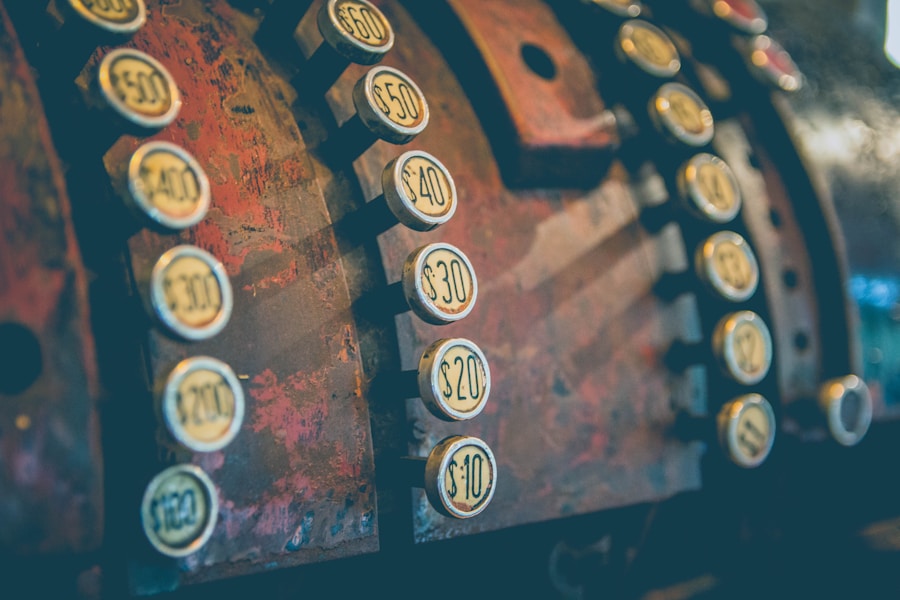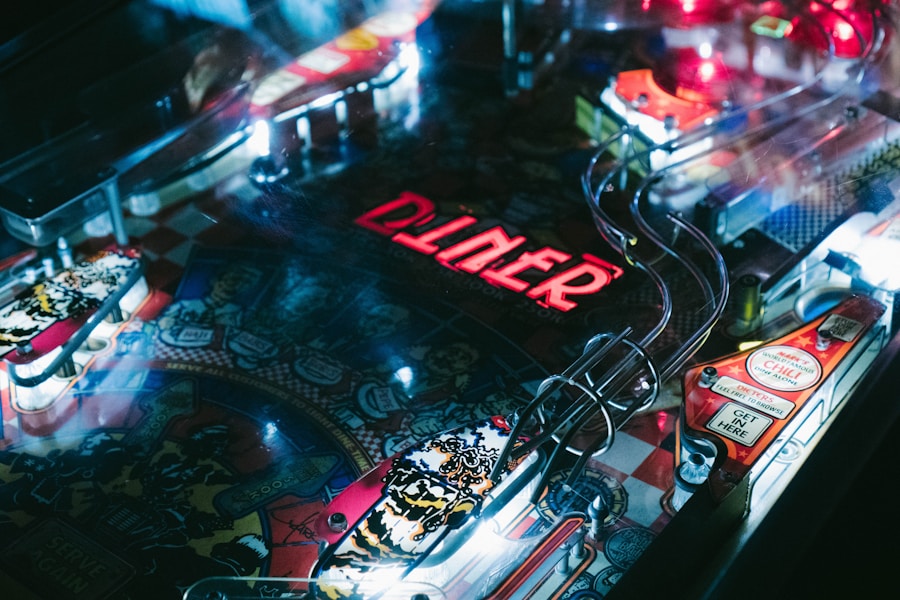Pinball machines have a rich and fascinating history that dates back to the 18th century. The earliest form of pinball can be traced back to a game called bagatelle, which was popular in France during the reign of King Louis
Bagatelle involved players using a cue stick to shoot balls into holes on a board, and it served as the precursor to modern pinball. In the 1930s, the first coin-operated pinball machines were introduced, and they quickly became a popular form of entertainment in bars and arcades. These early machines were simple in design, featuring a wooden playing field with pins and pockets, and they relied on mechanical mechanisms to keep score and propel the ball. As technology advanced, pinball machines evolved to incorporate electronic components, such as lights, sound effects, and digital displays. Today, pinball machines continue to be a beloved form of entertainment, with a dedicated community of enthusiasts who appreciate the unique blend of skill and chance that the game offers.
The evolution of pinball machines has been marked by significant advancements in design and technology. From the early days of bagatelle to the modern era of digital pinball, the game has undergone numerous changes to become the beloved pastime it is today. The introduction of electronic components in the 1970s revolutionized the way pinball machines were designed and played, allowing for more complex gameplay and immersive features. In recent years, advancements in digital technology have further expanded the possibilities for pinball, with virtual pinball machines offering a new way to experience the game. Despite these innovations, many enthusiasts still have a deep appreciation for classic pinball machines, which are prized for their nostalgic charm and mechanical simplicity.
Design and Technology Differences
The design and technology of pinball machines have evolved significantly over the years, leading to a wide range of differences between classic and modern machines. Classic pinball machines typically feature a simple layout with mechanical flippers, bumpers, and targets, while modern machines often incorporate advanced features such as ramps, magnets, and interactive toys. Additionally, classic machines rely on electromechanical scoring systems, while modern machines use digital displays and sound effects to enhance the player experience. The design of pinball machines has also evolved to reflect changes in popular culture and technology, with themes ranging from classic rock bands to blockbuster movies.
The technology used in pinball machines has also evolved over time, with early machines relying on simple mechanical components such as springs and levers to propel the ball and keep score. As electronic components became more prevalent in the 1970s, pinball machines began to incorporate digital displays, sound effects, and electronic scoring systems. In recent years, advancements in digital technology have led to the development of virtual pinball machines, which use digital screens to simulate the experience of playing a physical machine. Despite these advancements, many enthusiasts still have a deep appreciation for classic pinball machines, which are prized for their nostalgic charm and mechanical simplicity.
Gameplay and Features
Pinball machines offer a unique blend of skill and chance that has captivated players for generations. The gameplay of pinball is simple yet challenging, requiring players to use the flippers to keep the ball in play while aiming for targets and ramps to score points. Classic pinball machines typically feature a straightforward layout with basic objectives, while modern machines often incorporate more complex gameplay elements such as multi-ball modes, mini-games, and interactive toys. Additionally, many modern machines feature elaborate themes and licensed properties, adding an extra layer of immersion for players.
In addition to their gameplay mechanics, pinball machines also offer a wide range of features that enhance the player experience. Classic machines often feature simple mechanical devices such as pop bumpers, drop targets, and spinners, while modern machines incorporate advanced features such as magnets, interactive toys, and elaborate lighting effects. Many modern machines also include digital displays that provide information about game objectives and scoring, as well as dynamic animations that react to player actions. These features add depth and excitement to the gameplay experience, making modern pinball machines a thrilling form of entertainment for players of all ages.
Popularity and Cultural Impact
Pinball has had a significant impact on popular culture since its inception, with the game becoming a beloved form of entertainment for people around the world. In the 20th century, pinball machines were a common sight in bars, arcades, and amusement parks, providing players with hours of entertainment and social interaction. The game's popularity continued to grow throughout the decades, with iconic machines such as Bally's "Addams Family" and Williams' "The Twilight Zone" becoming cultural touchstones for fans of the game. Pinball has also had a lasting impact on popular music and film, with numerous songs and movies featuring references to the game.
In recent years, pinball has experienced a resurgence in popularity thanks to dedicated enthusiasts who have worked to preserve and promote the game. Pinball tournaments and events have become increasingly common, providing players with opportunities to compete and socialize with fellow enthusiasts. Additionally, the rise of virtual pinball has introduced the game to a new generation of players who may not have had access to physical machines. As a result, pinball continues to be a beloved form of entertainment with a dedicated community of fans who appreciate its unique blend of skill and chance.
Collecting and Restoring Classic Machines
Collecting and restoring classic pinball machines has become a popular hobby for enthusiasts who appreciate the history and craftsmanship of these iconic games. Classic pinball machines are prized for their nostalgic charm and mechanical simplicity, making them highly sought after by collectors. Many enthusiasts enjoy the challenge of finding and restoring vintage machines, which often require extensive repairs and maintenance to bring them back to their original condition. Restoring a classic pinball machine can be a labor-intensive process that involves cleaning and repairing mechanical components, replacing worn or damaged parts, and restoring the machine's artwork and cabinet.
In addition to collecting and restoring classic machines, many enthusiasts also enjoy customizing their machines with unique modifications and enhancements. These modifications can range from simple cosmetic changes such as custom artwork or lighting effects to more complex alterations such as adding new gameplay features or digital displays. Some collectors also enjoy creating custom-themed machines based on their favorite movies, TV shows, or video games. Collecting and restoring classic pinball machines is a rewarding hobby that allows enthusiasts to preserve these iconic games for future generations to enjoy.
Competitive Play and Tournaments
Competitive pinball has become increasingly popular in recent years, with players from around the world participating in tournaments and events that showcase their skills on the game. Pinball tournaments offer players the opportunity to compete against each other in a friendly and social environment, with events ranging from local competitions to international championships. Tournaments typically feature a variety of formats and rulesets that challenge players to demonstrate their mastery of the game's mechanics and strategies. Many tournaments also offer cash prizes or other rewards for top performers, adding an extra level of excitement for participants.
Competitive pinball has also benefited from advancements in technology that have made it easier for players to connect and compete with each other. Online platforms such as Pinburgh and IFPA provide players with opportunities to participate in virtual tournaments and compete against opponents from around the world. These platforms also offer resources for players to track their performance and rankings, as well as connect with other enthusiasts who share their passion for the game. Competitive pinball continues to be a thriving community with a dedicated following of players who enjoy testing their skills against others in a fun and competitive environment.
Future of Pinball: New Innovations and Trends
The future of pinball is filled with exciting possibilities as designers and manufacturers continue to push the boundaries of what is possible with this iconic game. Advances in digital technology have opened up new opportunities for creating immersive gameplay experiences that appeal to both new and experienced players. Virtual pinball machines have become increasingly popular in recent years, offering players a new way to experience the game through digital screens that simulate the feel of playing a physical machine. These virtual machines often feature realistic physics simulations and dynamic lighting effects that enhance the gameplay experience.
In addition to virtual pinball, designers are also exploring new ways to incorporate interactive technology into physical machines. Some modern pinball machines feature advanced features such as augmented reality displays that provide additional information about game objectives or scoring. Others incorporate motion-sensing technology that allows players to interact with the game in new ways, such as tilting or shaking the machine to affect gameplay. These innovations are helping to keep pinball relevant in an increasingly digital world while preserving the unique blend of skill and chance that has made it a beloved form of entertainment for generations.
In conclusion, pinball machines have come a long way since their humble beginnings as bagatelle games in 18th century France. The evolution of design and technology has led to significant differences between classic and modern machines, offering players a wide range of gameplay experiences and features to enjoy. Despite changes in popular culture and technology, pinball continues to be a beloved form of entertainment with a dedicated community of enthusiasts who appreciate its unique blend of skill and chance. The future of pinball is filled with exciting possibilities as designers continue to push the boundaries of what is possible with this iconic game, offering new innovations and trends that will appeal to both new and experienced players alike. Whether collecting classic machines or competing in tournaments, pinball enthusiasts continue to preserve and promote this timeless form of entertainment for future generations to enjoy.









